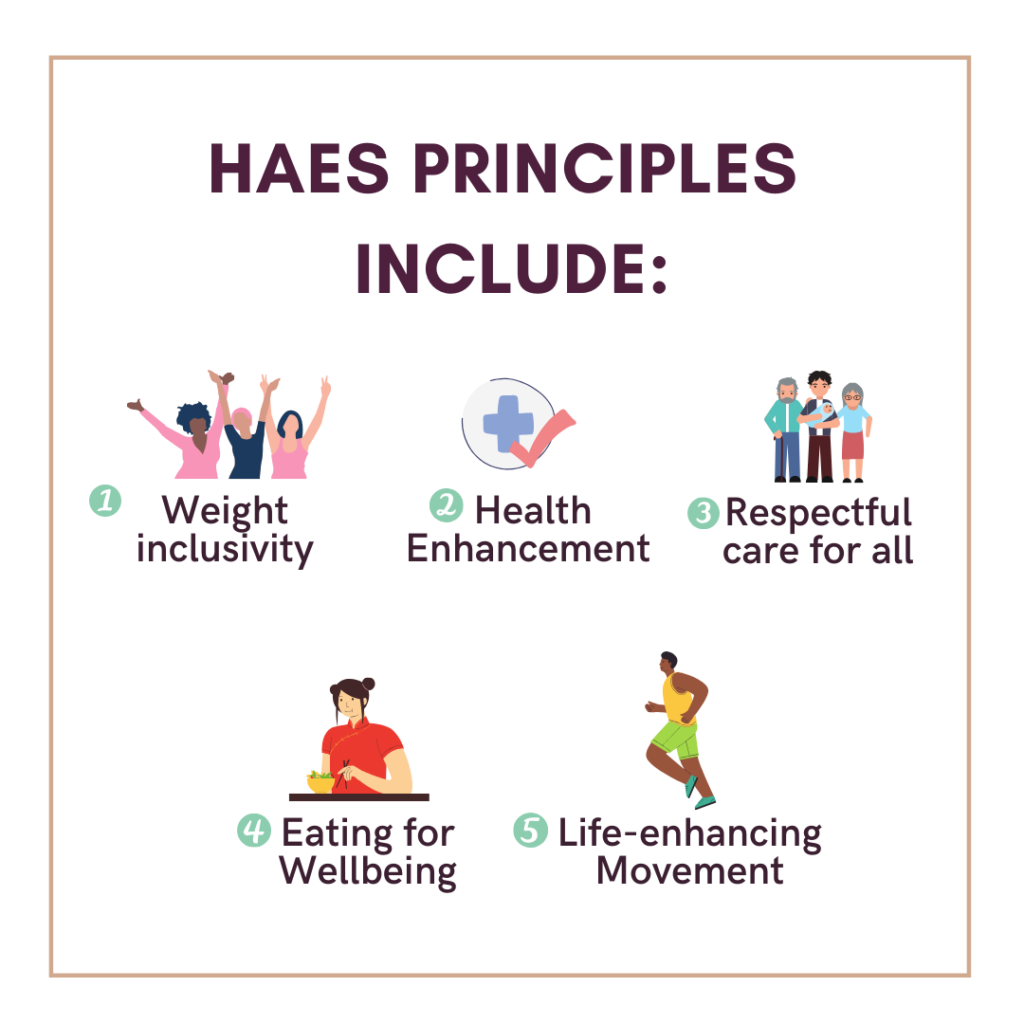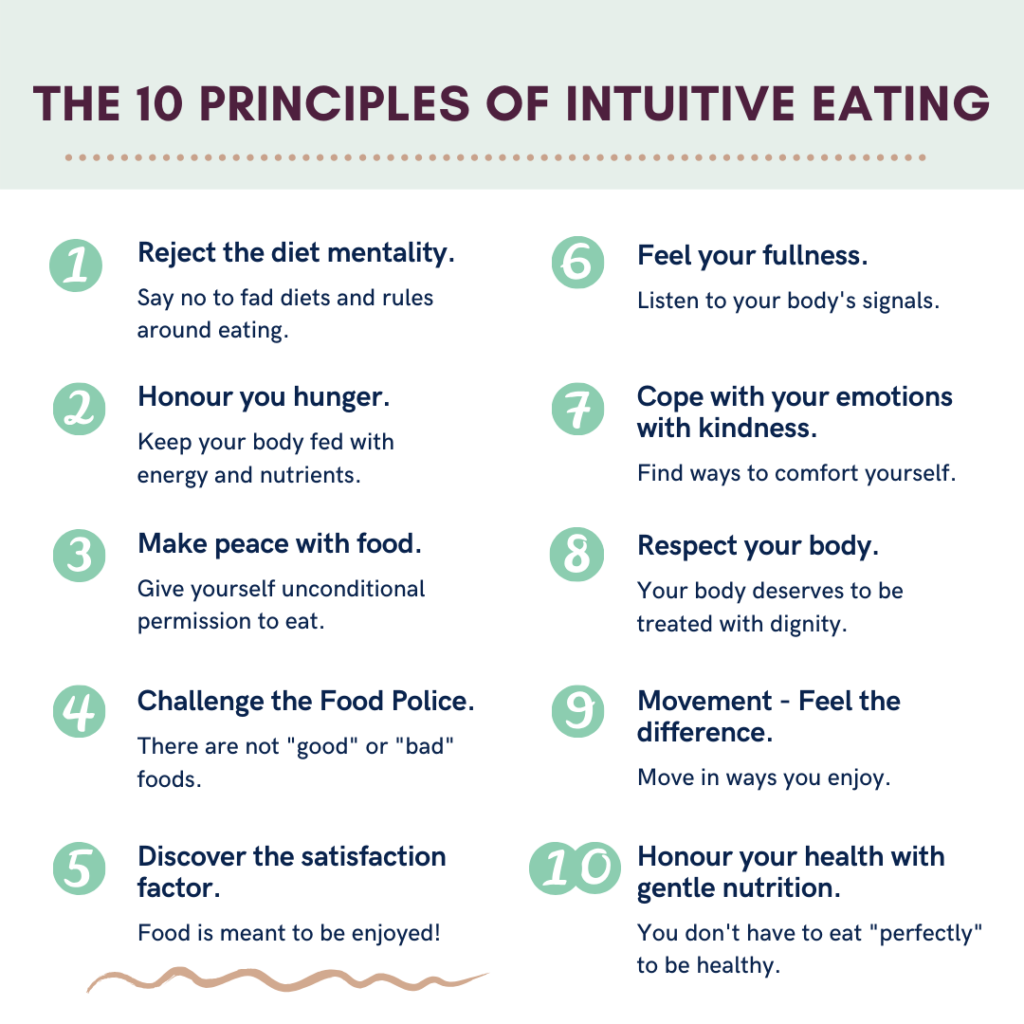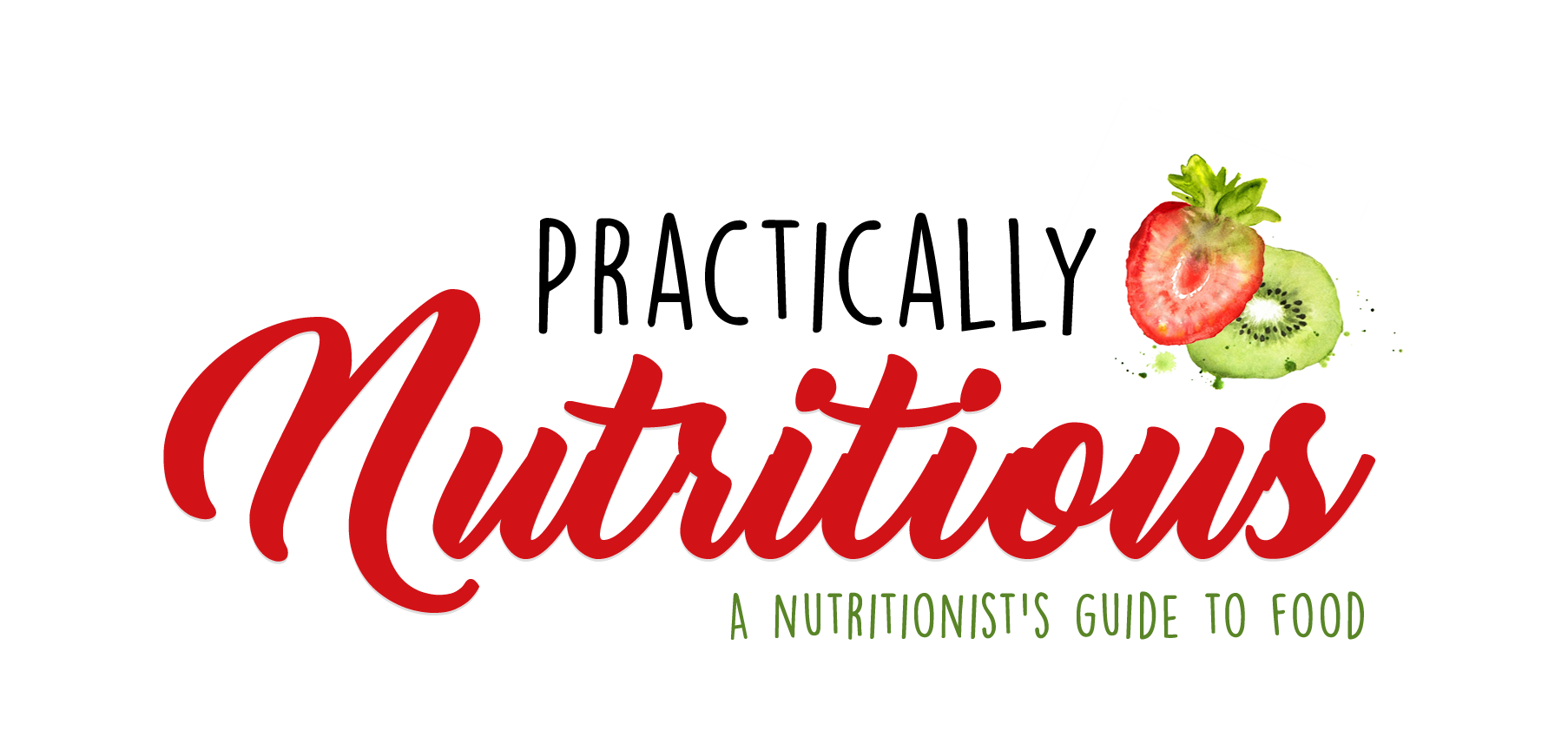Written by: Karla Morillo Cox, McGill Dietetics Student
What if I told you that you don’t have to diet to be healthy? Or even better, what if I told you that you don’t need to stick to food rules of any sort be healthy? To me, that sounds awesome.
Health at Every Size® (HAES®) and intuitive eating are two approaches that focus on creating healthier relationships with food and our body. And neither of them have diets or food rules on their radars. Yay!

As we saw in last week’s article on the reasons diets fail, diets don’t work and can cause harm. In fact, research has shown that about 95% of people who lose weight by dieting will regain the lost weight (or even more) in 1 to 5 years. The bottom line is that weight loss is hardly sustainable.
That being said, let’s begin by diving into the basics of HAES.
What is Health at Every Size (HAES)?
HAES® is a weight-neutral approach focused on promoting healthy behaviours in people with different body sizes. It is also a social justice movement that works towards promoting size-acceptance, ending weight discrimination and stigma (which is an independent predictor of poor health outcomes), and challenging the obsession that our culture has with weight loss and thinness. Basically, HAES says that you don’t have to be thin to be healthy, and that people with higher body weights do not necessarily need to lose weight. It focuses on health rather than weight.
The HAES approach is fairly new, with most research on it only starting in the early 2000s. The HAES principles emerged partially in response to the lack of success of traditional approaches to weight management. As a result, HAES proponents argue that traditional weight loss approaches provide a false hope to individuals seeking to lose weight. Indeed, not only can traditional approaches be ineffective, but dieting and restriction also cause physical, emotional, and spiritual distress.
The 5 HAES principles

Let’s take a look at these principles more closely:
- Weight Inclusivity: healthcare providers should respect all different weights, shapes, and sizes and avoid idealizing some weights while viewing others as abnormal.
- Health Enhancement: we must support health policies that allow everyone equal access to information and services, as well as any lifestyle practices that improve well-being. We must respect an individual’s physical, economic, social, spiritual, emotional, and other needs.
- Respectful Care: healthcare providers need to acknowledge their biases and try to avoid weight stigma and weight discrimination. We must take into consideration the individual’s environment and personal factors that influence health.
- Eating for Well-being: we should promote flexible and individualized eating rather than focus on weight control. Plans and advice should be based on the individual’s hunger, satiety, nutritional needs, and pleasure.
- Life-Enhancing Movement: we should focus on promoting physical activity for people of al sizes, abilities and interests. Activities should be enjoyable and freely-chosen.
HAES: the scientific evidence
There is a growing body of scientific evidence that supports HAES as a viable alternative to traditional weight-loss approaches. This research has shown that the health risks of being “overweight” or “obese” may be overstated. For example, evidence suggests that:
- Weight and BMI are poor predictors of disease and longevity.
- The focus on weight as an indicator of health is often misdirected and harmful. Why harmful? Think about the food restrictions and diets people put themselves through to achieve thinness.
- Non-diet interventions aligned with HAES principles are effective in reducing psychological distress, increasing cardiorespiratory fitness (e.g. blood pressure and cholesterol), increasing energy expenditure, and improving eating behaviours in people regardless of body size when compared to traditional diet interventions.
- The HAES approach enables people to maintain long-term behaviour change, whereas traditional diet approaches do not.
So how does HAES look like in practice? The main components of the HAES approach are intuitive eating, body acceptance regardless of size or shape, and physical activity for movement and health.
What is Intuitive Eating?
The concept of intuitive eating was developed in 1995 by dietitians Evelyn Tribole and Elise Resch. Intuitive eating also has defined principles and it has been proven effective in preventing negative body image and disordered eating. Up to date, around 125 studies have assessed the positive impacts of intuitive eating on various heath indicators.
Christy Harrison, MPH, RD, CDN, a HAES-informed dietitian and intuitive eating counselor, defines intuitive eating as an approach to eating that focuses on “using internal cues rather than external rules to guide your food choices”. This means “approaching food and movement choices from a place of self-care, permission, and body acceptance rather than self-control, deprivation, and weight stigma”.

So, we know that weight loss is hardly sustainable and that health can be improved regardless of our weight and size. Rather than focusing on weight, intuitive eating focuses on cultivating healthy behaviours. Weight and shape are not behaviours.
Sounds great, right? It is so simple, and yet it is not easy. For people who have micromanaged their eating, dieted, or struggled with disordered eating and eating disorders, the principles of intuitive eating might seem quite outlandish.
For some, it is a total revelation to get rid of food rules and learn to listen and trust their intuition to guide food choices. To be honest, for me it was. Knowing and practicing intuitive eating was the final step I took towards ditching restrictive thoughts around food, and this helped me to stop micromanaging my eating.
Here are some resources that can help you better understand what HAES and Intuitive Eating are all about. These might also help you get started with your own journey:
- Health At Every Size: The Surprising Truth About Your Weight by Lindo Bacon
- Anti-Diet: Reclaim Your Time, Money, Well-Being, and Happiness Through Intuitive Eating by Christy Harrison
- Intuitive Eating: A Revolutionary Program that Works by Evelyn Tribole and Elyse Resch
- The Intuitive Eating Workbook: Ten Principles for Nourishing a Healthy Relationship with Food by Evelyn Tribole and Elyse Resch
- Eating in the Light of the Moon by Anita A. Johnsto
- Just Eat It: How Intuitive Eating Can Help You Get Your Shit Together Around Food by Laura Thomas
References
- Association for Size Diversity and Health. HAES® Principles. Retrieved from https://www.sizediversityandhealth.org/content.asp?id=76.
- Bacon, L. Health at Every Size: The Surprising Truth About your Weight. BanBella: Dallas, TX.
- Harrison, C. (2019). Anti-Diet: Reclaim Your Time, Money, Well-Being, and Happiness Through Intuitive Eating. Hachette Book Group: New York.
- Obesity Canada (2018). Health At Every Size (HAES) – What’s It All About?. Retrieved from: https://obesitycanada.ca/snp/health-at-every-size-haes-whats-it-all-about/.
- Penney, T. L., & Kirk, S. F. (2015). The Health at Every Size paradigm and obesity: missing empirical evidence may help push the reframing obesity debate forward. American journal of public health, 105(5), e38–e42. https://doi.org/10.2105/AJPH.2015.302552.
